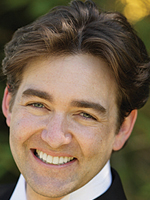Earnings claims and special vs. general damages
Asserting a claim for future loss-of-earning-capacity damages rather than future loss-of-earnings
As consumer attorneys, it is our job and duty to maximize our client’s recovery at trial. But we must be extremely careful in the presentation of those damages to a jury, because a jury will punish our clients if we fail to prove each element of damages we seek. Therefore, if you do not have a strong case for one type of damage, then waive it and focus on your strongest damages claims. Otherwise, you risk a jury reducing all your damages because they will feel misled by your exaggeration of your client’s losses.
The best example of this problem is the claim for future loss of earnings. In severe-injury cases, attorneys will routinely seek to assert such a claim. But a claim for future loss of earnings will open up your client to a rigorous cross-examination, which he or she may be unable to withstand. Opposing counsel will attack your client’s past work history, or lack thereof, and try to capitalize upon an argument that your client’s projected future loss of earnings is speculative. Consequently, if your client’s claim is not immaculate or not substantially supported by the evidence, then a future loss-of-earnings claim runs the risk of making an otherwise credible plaintiff appear untrustworthy and deceptive.
Nevertheless, there is an alternative available to us in these types of cases. It is the future loss-of-earning capacity claim. Unlike a future loss-of-earnings claim, a claim for future loss-of-earning capacity does not require proof of what your client will be reasonably certain to lose in the future. Rather, it simply requires the attorney to prove the reasonable value of the loss to the plaintiff.
Understanding the difference: Special versus general damages
Unfortunately, many judges will not understand or appreciate the difference between a future loss-of-earnings claim and a future loss-of-earning capacity claim. Moreover, the CACI jury instructions further confuse the issue, because CACI 3903D incorrectly describes lost earning capacity as an “economic damage” (i.e., special damage).
In reality, the loss of earning capacity is an aspect of general damages, not special damages. As the California Supreme Court stated in Connolly v. Pre-Mixed Concrete Co. (1957) 49 Cal.2d 483, 489 (Connolly), “Loss of earning power is an element of general damages which can be inferred from the nature of the injury, without proof of actual earnings or income either before or after the injury, and damages in this respect are awarded for the loss of ability thereafter to earn money.” California courts routinely uphold the distinction noted in Connolly. (See Gargir v. B’nei Akiva, supra, 66 Cal.App.4th at 1281; Hilliard v. A.H. Robins Co. (1983) 148 Cal.App.3d 374, 412; see also Rodriguez v. McDonnell Douglas Corp. (1978) 87 Cal.App.3d 626, 656 (Rodriguez), overruled on other grounds in Coito v. Superior Court (2012) 54 Cal.4th 480, 499.)
What is being compensated: Not the actual loss of earnings
In Rodriguez, supra, 87 Cal.App.3d at 656, the Court of Appeal explained that the impairment of the capacity or the power to work can be viewed as an injury or loss separate from an actual loss of earnings. Such a loss of earning power is an element of general damages, which can be inferred from the nature of the injury without proof of actual earnings or income either before or after the injury. (See Hilliard v. A.H. Robins Co. (1983) 148 Cal.App.3d 374, 412.) Therefore, damages are awarded for the loss of the ability to earn money or to continue working in one’s chosen vocation. (Id. at 489.)
As explained by Stein:
[One’s] earning capacity is not a matter of actual earnings. The impairment of the power to work is an injury wholly apart from any pecuniary benefit the exercise of such power may bring and if the injury has lessened this power, the plaintiff is entitled to recover. . . In short, the test is not what the plaintiff would have earned, but what he could have earned.
(Stein, Damages and Recovery – Personal Injury and Death Actions (1972), § 58, p. 94.)
Situations appropriate for asserting loss of earning capacity
Traditionally, the important distinction between what a plaintiff would have earned versus what she could have earned has been addressed and discussed in actions involving plaintiffs who are students, apprentices, non-working spouses, or unemployed. (See, Stein, supra, § 84, p. 131; see also Johns, California Damages – Law and Proof (2d. 1977) § 1.29, pp. 48-49.)
For example, there are numerous California decisions affirming the compensation of a plaintiff’s loss-of-earning capacity where future loss of earnings would have been difficult to prove. (See Storrs v. Los Angeles Traction Company (1901) 134 Cal. 91 [75-year-old retired plaintiff]; Germ v. City & County of San Francisco (1950) 99 Cal.App.2d 404 [56-year-old plaintiff “addicted to alcohol”]; McCormack v. City & County of S.F. (1961) 193 Cal.App.2d 96 [71-year-old widow]; Niles v. City of San Rafael (1974) 42 Cal.App.3d 230, 241 [upheld $503,570 loss of future earning capacity claim to a minor plaintiff based upon statistics of the United States Department of Labor showing the average lifetime earnings of an American male].)
Review of the foregoing cases illustrates that the loss-of-earning capacity is the loss of an asset. It is the loss of potential. Whether the plaintiff is or is not exercising that potential at the time of the accident is completely irrelevant. The focus is on the value of the plaintiff’s ability to exercise his or her potential to earn. However, you must define this focus for the judge and jury in order to obtain substantial damages for the loss.
Defining the legal standard for the Court
As mentioned above, many judges will not understand or appreciate the difference between a future loss-of-earnings claim and a future loss-of-earning capacity claim. Therefore, it would be foolish to start your case-in-chief at trial without first educating the judge.
There are many ways to address the issue with the court. For example, you can provide the court with a trial brief, which addresses the nature of your loss-of-earning capacity claim and explain the measure of damages for such a claim. It has been our experience, however, that judges rarely digest trial briefs with as much particularity as motions in limine. Therefore, we recommend a proactive approach to force the issue before the court by filing a motion in limine.
Of course, a court will not appreciate a motion in limine that only seeks to define the law rather than to exclude evidence or argument. Therefore, you should move to prevent the defense from making improper argument or misstating the legal standard for a future loss-of-earning capacity claim. For example, among other bases, your motion in limine could seek to preclude the defense from arguing any of the following: (1) plaintiff’s loss-of-earning capacity claim is speculative because plaintiff does not have an earnings history, (2) plaintiff has the burden to prove that he or she would actually have earned money in the future, but for the accident, or (3) plaintiff has the burden to prove that plaintiff was gainfully employed at the time of the accident.
There are other grounds, which you can use to support your motion. However, keep in mind that the actual purpose of the motion is to educate the judge about the legal standards applicable to a future loss-of-earning capacity claim. While a judge may not be inclined to muzzle defense counsel, your motion will educate the judge regardless of the ruling it elicits. It also avoids the danger of seeking to educate the judge during the trial.
Presenting the loss to the jury through the plaintiff and economist
By way of background, “Damages may be awarded for lost earning capacity without any proof of actual loss of earnings.” (Heiner v. Kmart Corp. (2000) 84 Cal.App.4th 335, 348, fn. 6, internal citations omitted.) Moreover, “[I]t is not necessary for a party to produce expert testimony on future earning ability although some plaintiff’s attorneys may choose as a matter of trial tactics to present such evidence.” (Gargir, 66 Cal.App.4th 1269, 1282, internal citations omitted.)
Despite the fact that expert testimony is not required, it is always helpful to introduce testimony of an economist in support of your claim for loss of earning capacity. During the economist’s direct examination, the economist can provide statistical earnings information, explain economic trends and discount rates, describe the difference between life expectancy and work-life expectancy, and, most importantly, explain to the jury how earning capacity is a type of asset. After all, the jury needs to hear from an expert economist that an individual’s earning potential is something of value whether or not the person is earning at the time of the accident. To that end, you need to discuss with your economist real world examples of individuals who have significant earning capacity although they may not choose to work. You should also revisit such examples during closing argument as we discuss further below.
Additionally, during the direct examination of your plaintiff and your economist, you should inquire about all of the real tangible assets the plaintiff actually possessed at the time of the accident. For example, what level of education had the plaintiff attained? What skills did the plaintiff have? If the plaintiff was a student, then what was the focus of the plaintiff’s studies?
Whether an individual works or not, there is always some type of skill, interest, or educational asset, which makes that individual unique. But even assuming an absolute void in education, skills, or vocational training, every single plaintiff still has some level of earning capacity.
For example, the average plaintiff has the ability to work a minimum-wage job before his or her accident. As such, the plaintiff has a capacity to earn at least minimum wage for the rest of his or her work life expectancy. Therefore, an economist can extrapolate the value of the future loss of that earning capacity by using statistical data, which will typically result in a sizable loss even if the wage is low.
Closing argument for lost earning capacity
The concept of lost earning capacity is difficult for a jury to understand. While the loss is tangible, the average juror will consider it intangible unless you do your job in explaining the loss.
During closing argument, you will have the opportunity to define the loss before defense counsel pollutes the jurors’ minds. Do not waste the advantage. When you speak to the jury, explain to the jury that there is a distinct difference between the future loss of earnings and the future loss-of-earning capacity. If the court and counsel agreed to give both CACI 3903C and 3903D, then use the following excerpts of each jury instruction in order to point out the difference in the measure of damages:
To recover damages for future lost earnings, Plaintiff must prove the amount of earnings she will be reasonably certain to lose in the future as a result of the injury.
(CACI 3903C.)
To recover damages for the loss of the ability to earn money as a result of the injury, Plaintiff must prove the reasonable value of that loss to her. It is not necessary that she have a work history.
(CACI 3903D.)
In addition to defining the legal standards, it is crucial that you also illustrate the nature of such a loss to the jury by providing real world examples. There are limitless examples for you to choose from, but the best ones would be geared towards the information you have about the jurors from voir dire.
For example, let’s imagine that you have a teacher on the jury. When you reach the part of your closing argument in which you discuss loss-of-earning capacity, you would try to make eye contact with the teacher and talk about how some teachers stop teaching, but they keep their tenure. If you have a retiree on the jury, spend some time making eye contact with the retiree and discuss how an individual chooses to retire, but maintains the ability to go out and get a job if he or she desired one. If you have an educated stay-at-home spouse, then talk about how a stay-at-home spouse does not give up his or her diploma, degrees, or training simply because he or she decided to sacrifice to take care of the children.
Outside of these specific individualized types of examples, you should also spend time talking to the jury about the value and meaning of the ability to work. In the last couple of trials we have tried, we spent significant amounts of time talking with the jury about the nonmonetary value of working and being employed. We discussed the pride that a person has when he or she is able to contribute to his or her family. We discussed the need to feel relevant in this world and how each of us needs to feel that we are able to contribute to it in some way. In other words, you must find the nonmonetary value in being able to earn in order to motivate the jury to award monetary value to the loss.
At the end of the day, the jury must determine what the reasonable value of the loss of the ability to earn is to the plaintiff, not the defense. While the defense will want to hammer earnings history, etc., your focus should be on the greater loss to the person’s self-esteem, dignity, and pride. If the plaintiff actually enjoyed her employment before the accident, then you must juxtapose that enjoyment of her job with her enjoyment of life. If you draw such parallels, then the jury can understand the loss in broader terms than simple number crunching will allow.
Conclusion
There are circumstances under which a future loss-of-earning capacity claim offers distinct advantages over a future loss-of-earnings claim at trial. Where your client’s injury is severe and life altering, he or she will suffer a significant future loss related to earnings. However, the proof for a future loss-of-earnings claim can be problematic. Therefore, consider asserting a future loss-of-earning capacity claim instead. It is a safer and preferable type of claim to assert in situations where the plaintiff’s earnings history or record will not support a future loss-of-earnings claim.
Nicole Lari-Joni

Nicole Lari-Joni is a partner at Lari-Joni & Bassell, LLP. With Torsten Bassell, they compose a trial team which has obtained multiple, multi-million dollar verdicts throughout Southern California. In 2011, Ms. Lari-Joni was named CAOC’s Woman Trial Lawyer of the Year. Their verdicts have also been featured in The Recorder’s annual edition of the Top California Million Dollar Verdicts. Presently, the firm maintains offices in Los Angeles and Santa Barbara.
Torsten Bassell

Torsten Bassell is a partner at Lari-Joni & Bassell, LLP. He has tried personal injury and wrongful death cases throughout California, resulting in verdicts featured by The Recorder and The National Law Journal as some of the ‘Top 100 Verdicts’ in California and the nation. He is a past finalist for CAALA’s Rising Star Award, CAALA’s Trial Lawyer of the Year Award and CAOC’s Street Fighter of the Year Award.
Copyright ©
2025
by the author.
For reprint permission, contact the publisher: Advocate Magazine

